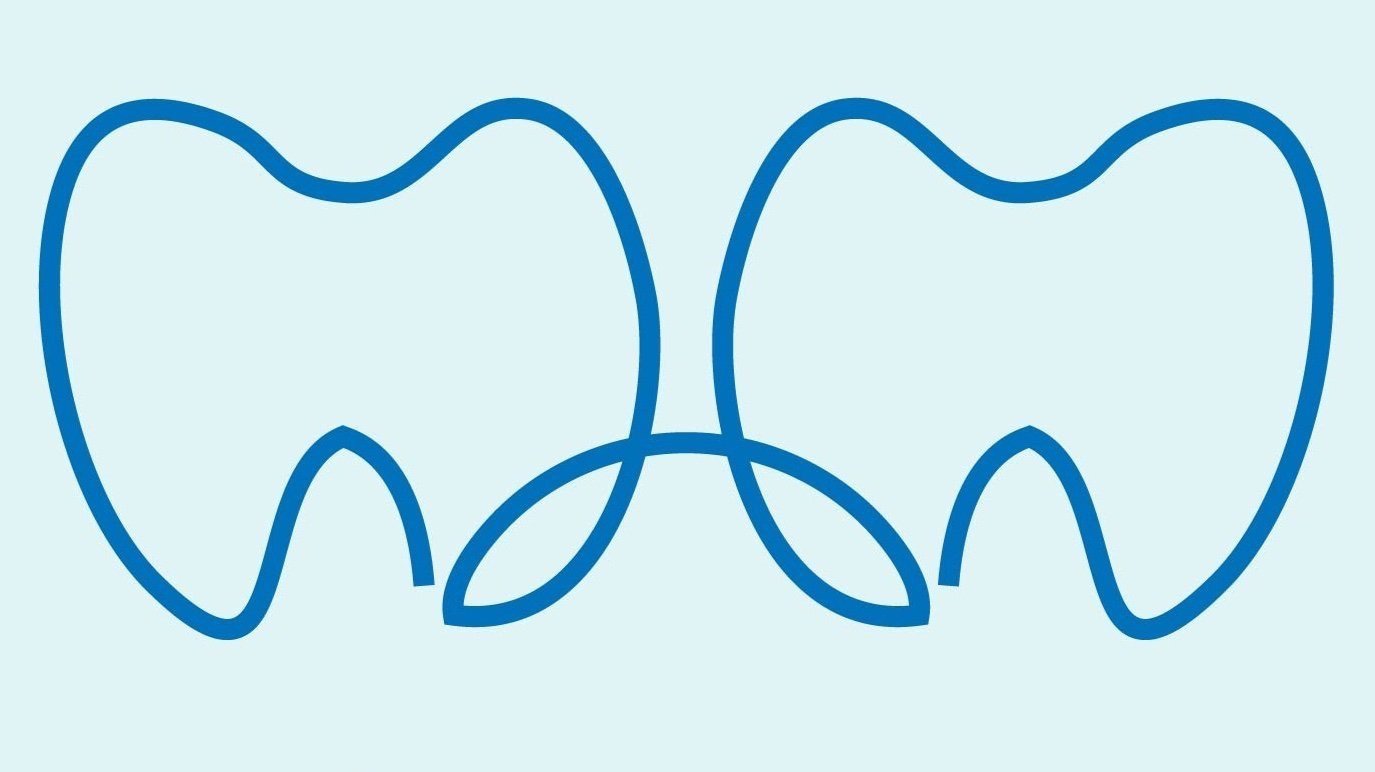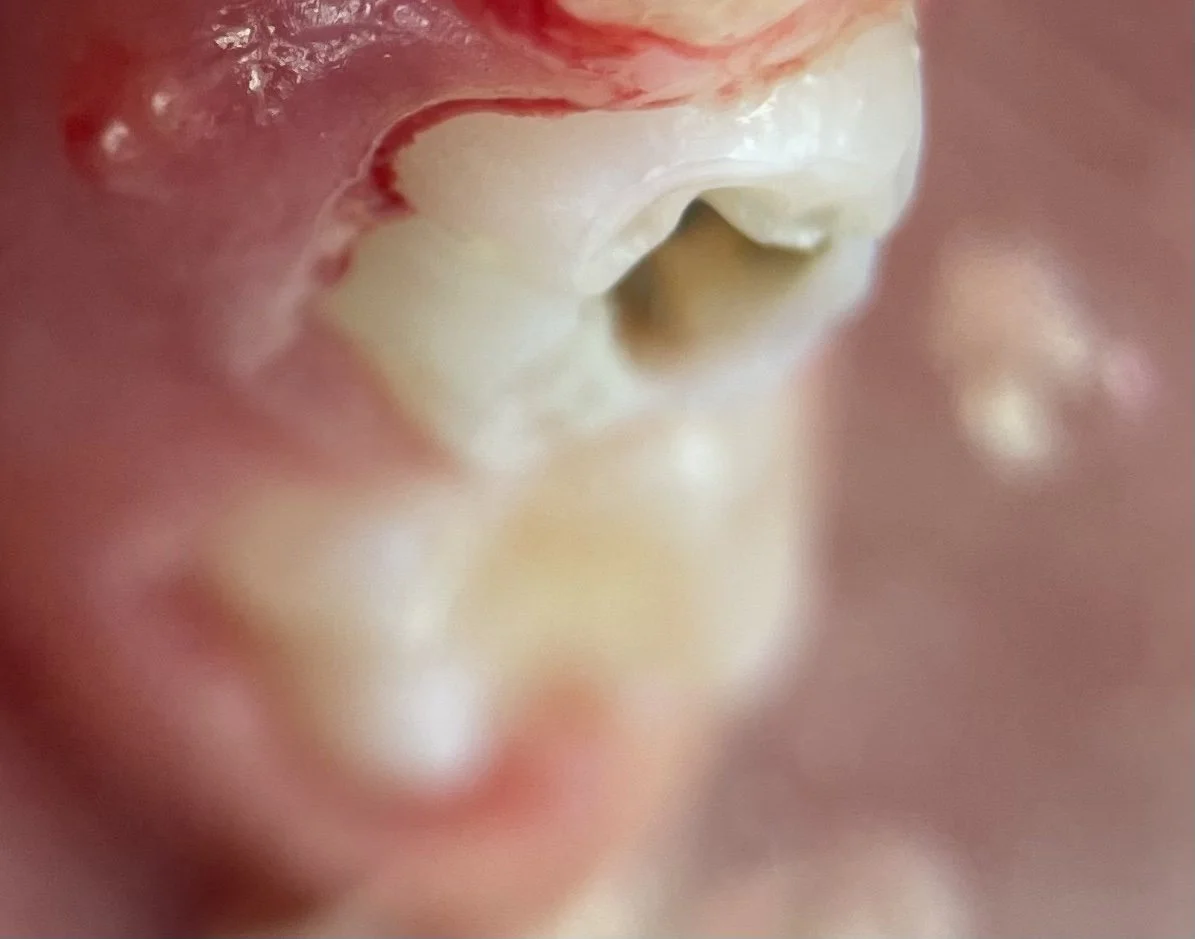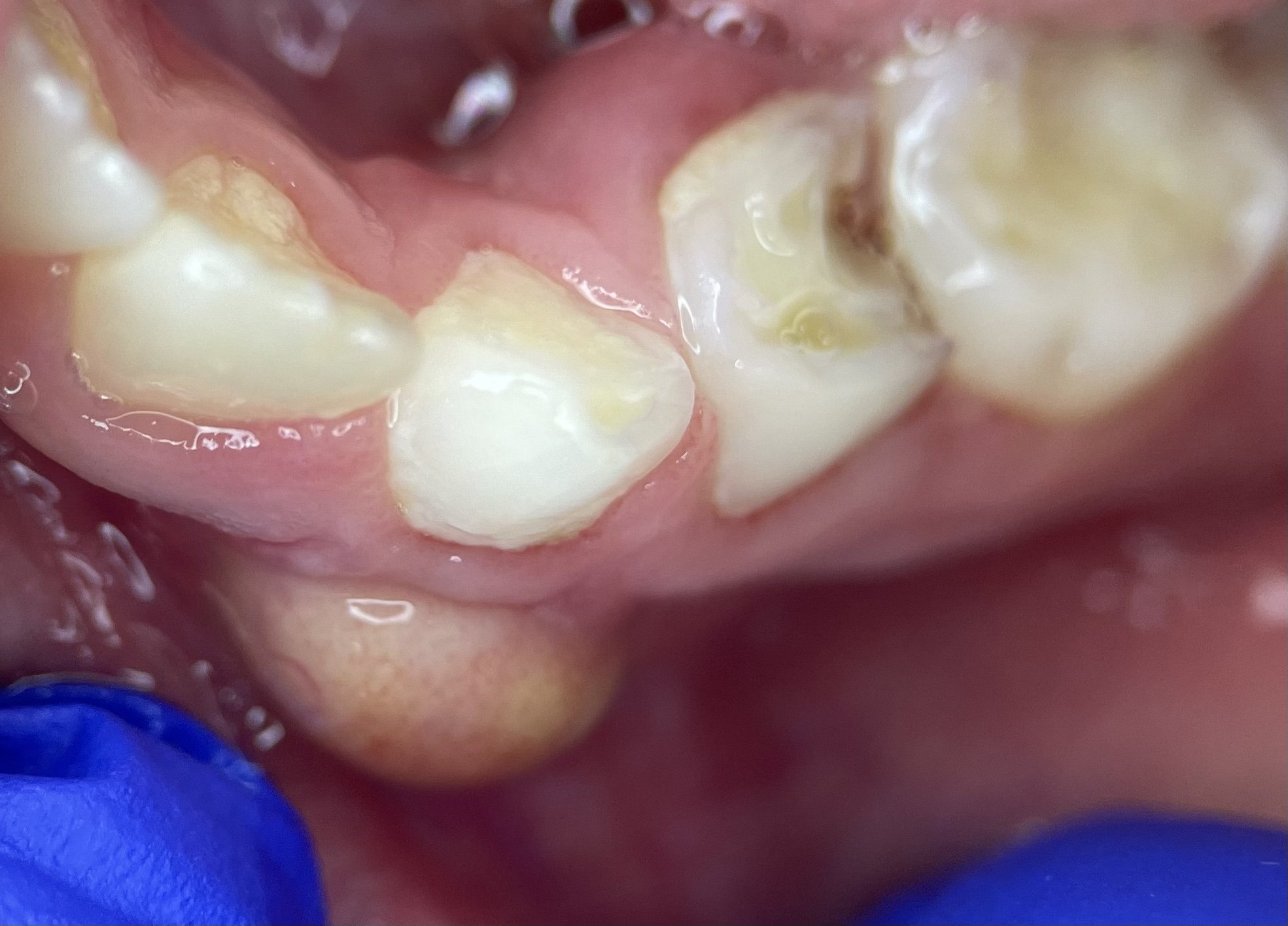Baby Tooth Cavities
Dental cavities are very common in children and the primary teeth. Difficulty brushing, disturbances in tooth formation, frequent snacking, and the high-sugar modern diet all put kids at a very high risk of developing cavities.
In fact, dental caries is the most common childhood chronic disease, with over 45% of children between 2-19 years of age having a treated or untreated cavity.
What does a cavity look like?
A small cavity may appear as a white or brown mark on the smooth surface or groove of the tooth. Sometimes small cavities in between the teeth are only visible on x-rays.
White line along the gum line is the first sign of a dental cavity. Cavities this small can usually be monitored.
A large cavity usually looks like small, dark hole on the surface of the tooth.
Large cavity on a primary teeth with obvious “hole” in the tooth. Full coverage restorations (crowns) are usually recommended in this case.
Extensive cavities have multiple noticeable darks spots, along with missing tooth structure.
An extensive cavity in a primary tooth with a gingival infection. Removal of these teeth with a space maintainer is usually recommended.
But the baby teeth will fall out, so it’s not a big deal right?
It depends. If the cavity is small and on a tooth that is soon to fall out, sometimes we recommend monitoring it. In these case, we only recommend treatment if your child starts to develop any symptoms (pain, swelling, etc.).
The front teeth fall out between 6-8 years of age, but the back teeth do not fall out until 10-12 years of age.
If your child develops a cavity on a front tooth before the age 4, or on a back tooth before the age 9, we usually recommend treatment. Depending on the severity of the cavity, treatment can range from a filling, crown, or even an extraction. If a back tooth is extracted, sometimes a space maintainer is recommended to prevent shifting of the teeth.
Read our blog posts about dental restorations for more in-depth information about dental treatments.
What if I don’t get my child’s cavities fixed?
Unfortunately, if a cavity goes untreated, it can infect the nerve of the tooth and surrounding tissue. This can be very painful and affect the developing permanent tooth under the baby tooth. If the infection continues to progress, a facial cellulitis can develop. This can be life-threatening.
A dental infection associated with a primary tooth cavity. These teeth are usually very tender. Antibiotics and extractions are usually recommended.
If your child ever displays signs of extra-oral swelling (toward the eye or under the chin), take them to the Emergency Room Department immediately. This is a medical emergency.
Facial cellulitis involving the cheek and orbit from an untreated cavity on a baby tooth. This is a medical emergency and requires antibiotics and treatment ASAP.






